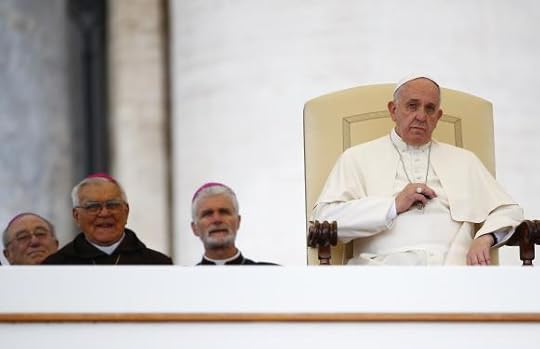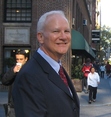Daniel Wetta's Blog, page 6
March 7, 2016
Medical Necessity by J. Willis Mitchell
J. Willis Mitchell’s debut novel, Medical Necessity (subtitled Sometimes the Worst Complication is Standing Right in Front of You), leaps confidently into a complex, gripping and often amusing story that could lose a reader unfamiliar with behind-the-scenes workings of healthcare if the story were in the hands of a less-skilled writer. Mitchell’s experience as writer, hospital CEO and marketing executive shows in his ability to take the reader on an astonishing tour of human character and lightning-fast story development while never letting the reader feel abandoned in an ocean of characters who manipulate healthcare regulation to their advantage.
Maybe it should be said that the characters also manipulate the lack of healthcare regulation to their advantage, because the author sets the tale of two hospitals and their staffs in the 1990s when the abuses of greed had become evident and necessary regulation was trying to catch up. Mitchell shows the need in a morality play that is entertaining and shocking. An evil for-profit hospital CEO vomits at the sight of blood, a disappointing first-born baby of the same hospital gets run over by an ambulance in the hospital parking lot and the subsequent cover-up spins out of control, greedy competent and incompetent doctors alike joust for position in a new outpatient facility, and patients die unnecessarily because of a lack of quality review and accountability.
The plot is tight and moves quickly. The author provides just enough background explanation of healthcare delivery to keep the reader informed while not bogging down the story. The characters stay true to form to the very end. There is no shortage of humor and irony, and this helps to flesh the characters in human skin. This is, after all, a morality play, so some stereotyping is required, but the people in the play through force of personality pull the reader into their world and account for themselves. Like a play, the author provides a cast of characters and their locales at the end of the book. His competent navigation system throughout the story renders this unnecessary, but it is a thoughtful touch.
I recommend this thriller to readers both inside and outside the healthcare field. Outsiders will feel informed and highly entertained, and insiders will feel this plus maybe some discomfort upon looking in a mirror. Mitchell’s book is a great read. Grab this one and have some fun!
Rated: 4 stars out of 5
Snowpack Public Relations – Publishing







March 3, 2016
Candlelight by Ravi S. Khan
Candlelight by Ravi S. Kahn, PhD is a stunning book, breathtakingly beautiful through its emotional honesty. The author has written a fictional memoir at the age of 80, but the book surges with the nuclear energy of a young man’s force. I am not sure what a fictional memoir is. I know truth when I read it or hear it. Maybe names have been changed, but the intellectual processes of the author, his bleeding sorrows and regrets, his musings about what he knows and what he doesn’t know, and his loving optimism for a better world when “Generation Fun” will be in its prime, all sum to a brilliant portrait of a life lived and a life to be.
The narrator in this book tells the story of his life and the most important people to him through time. The reader quickly understands that the man was a brilliant scientist, an Asian man of Muslim faith, who fled his country for the sake of his family and established them in the United States. It was a time of unconscionable human repression. For reasons explained in the book, the author late in life wonders if his flight with family was a mistake. He goes years suffering depression and regret. Yet, the story reveals what perhaps the author still does not know: he was and is a very brave man.
I ended the book feeling dumfounded. It is simply beautiful. I spent some time trying to figure out how I could write a review, but frankly, I have never read anything quite like this. So I am going to make this very simple: Read this book! It is rare to receive ruminations that originate both from intellect and heart. This author does not give you time to judge him. Just when you think that you have figured out his life for him, he transports you warp-speed to a view from a different place in space and time.
Read this book. You rarely receive gifts of such lovely quality.
Candlelight, Friesen Press 2015 http://www.friesenpress.com/bookstore/title/119734000024340203/Ravi-S.-Kahn-Candlelight







February 18, 2016
Being a journalist in Mexico is getting even more dangerous

Printed in The Washington Post:
By Javier Garza Ramos February 18 at 6:30 AM
Javier Garza Ramos is a journalist based in northern Mexico. He is a former editor of El Siglo de Torreón and has worked on press freedom issues with the World Association of Newspapers and the International Center for Journalists.
Photos of slain journalists and cameras outside the Veracruz state office during a protest by journalists in Mexico City on Feb. 11, 2016. (Ronaldo Schemidt/AFP/Getty Images)
Drug cartels and others know they can attack the media with little fear of consequences.
Anabel Flores, a 27-year-old mother of two toddlers, was kidnapped by armed men who stormed her house in the early hours of Feb. 7 in the Mexican city of Orizaba, state of Veracruz. The facts are dramatic, but it’s also an old story: Flores was a reporter, and her fate was similar to that suffered by more than 100 journalists in the past 15 years.

Her body was found two days later, on the evening of Feb. 9. Like many of her slain colleagues, Flores covered the crime beat. And in the state of Veracruz, one of the most violent in Mexico, fraught with violence by drug cartels, this is a high-risk job. Her death was another chilling reminder that a kidnapping almost surely means death for a Mexican journalist. It is a trend that Mexico shares with Middle Eastern countries such as Iraq and Syria, also among the world’s most dangerous places for journalists, where the murder of American reporters Jim Foley and Steve Sotloff at the hands of the Islamic State let the world know that a kidnapping is more likely to end in death than release.
In Mexico, this has been the case in more than half of the 17 murders of journalists since 2014, as documented by the Journalists at Risk project supported by ICFJ and Freedom House. Nine of those 17 reporters, editors or news anchors were kidnapped before being killed. Their bodies were found after their abductions had been reported, and in all cases the authorities launched search operations. But the final, tragic outcomes prove that the government’s response, at both the local and national level, is woefully inadequate.
Journalists have been missing for days before their bodies are found. When Flores was kidnapped, the Veracruz state government announced an operation to look for her. It didn’t work, and she was found dead two days later. The authorities can be even more clueless, as evidenced by the case of Moisés Sánchez, also in Veracruz. He was kidnapped in the town of Medellín on Jan. 2, 2015, and according to police reports, he was killed the same day. However, authorities took 22 days to find his body — even though they had several suspects in custody who had admitted the crime.
Those are just the cases in which a homicide could be determined. In addition to those nine kidnappings that resulted in death in the past two years, two more journalists remain missing after being abducted. María del Rosario Fuentes, a blogger in the state of Tamaulipas, was last seen in October 2014. She was presumed dead after pictures of what appeared to be her body circulated in her social media accounts, but her remains have not been found. Mario Crespo Ayón disappeared in the state of Sinaloa in December 2014 and did not leave a trace.
All told, 11 journalists who were kidnapped in Mexico in the past two years are either dead or still missing. Only five journalists kidnapped in the same period were lucky enough to be released.
The problem of missing journalists is not new. The organization Article19 has documented 23 disappearances since 2003. “Mexico is the country with more missing journalists in the world. A disappearance represents a continuing crime and a sign of despair in the pursuit of justice,” says Dario Ramirez, Article19’s director in Mexico.
In the past 10 years, the Mexican government has created a special prosecutor for crimes against journalists, passed special laws federalizing those crimes and set up protection mechanisms for journalists at risk or under threat, measures that were implemented as attacks against the media grew at the turn of the decade. Since then, government officials and legislators routinely promise to improve the guarantees for a free press.
The result? The situation is worse. In 2005, the Mexican press was ranked “Partly Free” in an index by Freedom House that serves as a worldwide reference. In 2015, even after the creation of laws and institutions designed to “protect” the press, Mexico was ranked “Not Free.” Mexican journalists are now less safe than ever, and as they struggle to protect themselves and form support networks, the response from authorities amount to no more than window dressing.
For example, the state where Flores’s body was found already knew it had a problem. If Mexico is one of the most dangerous countries for journalists, Veracruz is the most dangerous part of Mexico. In the past five years, 15 journalists have been killed there, and seven of the 17 Mexican journalists killed since 2014 were either murdered in or working in Veracruz. Four were killed there, and three others were murdered outside Veracruz but did their work there, including Rubén Espinosa, who had fled for Mexico City, where he was killed last summer. Veracruz also accounts for three of the seven missing journalists since 2011.
Other southern states are almost as bad, though, such as Oaxaca, where six journalists have been killed since 2014, and Guerrero, where threats and attacks are frequent but not always reported.
This means that violence against the media has shifted: In the early part of the decade, the northern states were the riskier places for journalists, mostly due to the violence unleashed by organized crime. Since then, as violence went down in the north, it went up in the south. More alarming, it’s not just organized crime groups killing journalists in southern Mexico, as it was in the north. Attacks or arbitrary detentions of members of the media come from criminal groups, but also from government officials or security forces. The murder of Moisés Sánchez is a case in point: Investigations alleged that his kidnapping was ordered by the mayor of Medellín, the town where Sánchez edited a small magazine, because he didn’t like stories that appeared in La Unión, the magazine that Sánchez published. Officials in Veracruz say that the hit was carried out by criminals hired by the local police chief — a macabre form of “outsourcing” violence against journalists.
For years, Mexican journalists have known that stories about corruption, crime or violence can trigger tragic repercussions from those affected: drug cartel bosses, government officials, police chiefs. Violence has been unleashed on the Mexican media in an unprecedented scale, especially at the local level. Reporters and editors in small or medium cities are the most affected, and protection is absent. Impunity in crimes against journalists is rampant and it is the cause of every new aggression: Anyone who today plans to attack a journalist or news organization can do it because the ones that did it before got away with it.







February 16, 2016
At Mass, Pope Francis Embraces ‘Misunderstood’ of Mexico
The New York Times, February 16, 2016
Francis invoked the harsh treatment endured by indigenous people and called for social justice.
Source: At Mass, Pope Francis Embraces ‘Misunderstood’ of Mexico
SAN CRISTÓBAL DE LAS CASAS, Mexico — Pope Francis came to the highlands of Mexico’s southern frontier on Monday to offer a pastoral embrace to the region’s impoverished indigenous people, expressing shame over discrimination and exploitation and honoring the legacy of a beloved local bishop who once clashed with the Mexican government — and the Vatican.
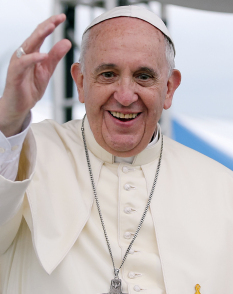
In visiting the state of Chiapas, a region on the Guatemalan border long synonymous with the struggles and armed rebellions of Mexico’s Mayan communities, Francis presided over an outdoor morning Mass before tens of thousands of people ringed by rugged green mountains. Looking over the crowd, Francis invoked the harsh treatment endured by indigenous people and called for social justice.
“On many occasions, in a systematic and organized way, your people have been misunderstood and excluded from society,” Francis said. “Some have considered your values, culture and traditions to be inferior. Others, intoxicated by power, money and market trends, have stolen your lands or contaminated them.”
He added, “How worthwhile it would be for each of us to examine our conscience and learn to say, ‘Forgive me!’ ”
Midway through a six-day tour of Mexico, Francis has blended familiar calls for hope and mercy with stinging critiques. He warned Mexican bishops against “triumphalism” and complacency. He preached against inequality while standing at the edge of one of the country’s poorest slums. And he has bemoaned the country’s drug-related violence.
Yet Francis is also treading carefully. As in past trips abroad, he has so far avoided directly criticizing the nation’s leaders, alluding to corruption but resisting a sharp-worded accounting of the failures of a government with dismal popularity ratings. As yet, it was also unclear whether Francis would meet with relatives of the 43 students who mysteriously disappeared in 2014 in the state of Guerrero, a crime that has deeply embarrassed the government.
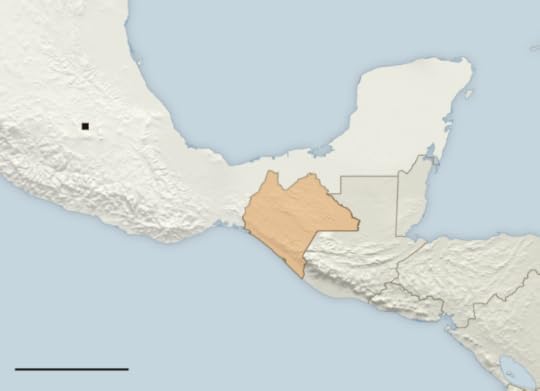
Bishop Ruiz made enemies of landowners and was also distrusted by the Mexican state for his closeness to the Zapatista National Liberation Army, the armed rebels who led a short insurgency against the state in 1994. He served as the mediator in peace negotiations between the Zapatistas and the government but later quit, accusing the government of persecuting him and not negotiating in good faith.
As bishop overseeing a diocese one-fifth the size of Italy, Bishop Ruiz faced a severe shortage of priests and eased the burden by ordaining several hundred married male deacons, a vast majority of them indigenous men. But some church officials suspected he ultimately intended to ordain some of the married deacons as priests. In 2002, Pope John Paul II prohibited the diocese from ordaining any more deacons.
But in 2014, Francis reversed that edict as some skeptics questioned whether the new pope was signaling a softer line on priestly celibacy, something denied by Vatican officials. Priest shortages remain a problem in the diocese, which currently has 108 priests for 1.3 million Catholics, even as evangelical Protestants have made headway in recent years with their more expansive approach to worship.
Five years after his death, Bishop Ruiz, who was known as Tatic, a local term for “father,” remains a powerful presence. He is credited with building the diocese’s first primary schools and translating the Mexican Constitution into local languages so people would know their rights.
Before the morning Mass, one of the speakers onstage led a cheer. “The people walk with Tatic Samuel,” the people shouted, “and with Francis.”
Before the morning Mass, one of the speakers onstage led a cheer. “The people walk with Tatic Samuel,” the people shouted, “and with Francis.”
Bishop Raúl Vera, who worked closely with Bishop Ruiz, said the symbolism of Francis’s visit to the tomb would resonate with many people — and also raise expectations.
“Pope Francis is a Latin American, and his duty now is to pick up the work that men like Ruiz have done in the past,” Bishop Vera said.
On Monday, leaders of indigenous groups from 15 Latin American countries came to San Cristóbal to demand that Catholic leaders take action on the pope’s environmental encyclical.
Francis, returning to the themes of that encyclical during his morning Mass, said, “We can no longer remain silent before one of the greatest environmental crises in world history.”
Azam Ahmed and Elisabeth Malkin contributed reporting from Mexico City.







February 15, 2016
In Mexican Slum, Pope Francis Laments Economic Gap
2/14/2016 New York Times
ECATEPEC, Mexico — Pope Francis stepped into the heartland of Mexican inequality on Sunday, presiding over an enormous outdoor Mass in the impoverished outskirts of the capital and urging the joyous crowd not to fall prey to the wealth, vanity and pride that can create “a society of the few, and for the few.”
By coming to Ecatepec, one of the country’s largest, poorest and most violent cities, the Latin American pope placed himself at the center ofMexico’s identity crisis. Nagging economic disparity has left nearly half of the country living in poverty while a mere sliver of society controls the rest — even as drug traffickers terrorize large parts of the nation.







En Chiapas, el Papa le habla en su idioma a los indígenas


El Economista
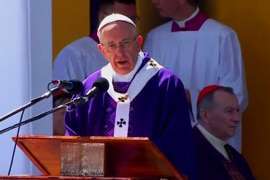 © Proporcionado por El Economista San Cristóbal de las Casas.- El Papa condenó hoy el despojo y contaminación a las tierras de los pueblos indígenas perpetrados por personas “mareadas por el poder, el dinero y las leyes del mercado”, instó a hacer un examen de conciencia y aprender a decir “!Perdón!”.
© Proporcionado por El Economista San Cristóbal de las Casas.- El Papa condenó hoy el despojo y contaminación a las tierras de los pueblos indígenas perpetrados por personas “mareadas por el poder, el dinero y las leyes del mercado”, instó a hacer un examen de conciencia y aprender a decir “!Perdón!”.“El mundo de hoy, despojado por la cultura del descarte, los necesita”, clamó ante miles de indígenas de México y Centroamérica, quienes abarrotaron los campos del Centro Deportivo Municipal de esta ciudad.
Durante su sermón, el líder católico defendió las riquezas culturales de los pueblos originarios y reconoció el anhelo de esas comunidades a vivir en libertad, en una tierra donde la opresión, el maltrato y la degradación no sean la moneda corriente.
“Sin embargo, muchas veces, de modo sistemático y estructural, sus pueblos han sido incomprendidos y excluidos de la sociedad. Algunos han considerado inferiores sus valores, su cultura y sus tradiciones”, constató.
“Los jóvenes de hoy, expuestos a una cultura que intenta suprimir todas las riquezas y características culturales en pos de un mundo homogéneo, necesitan que no se pierda la sabiduría de sus ancianos. El mundo de hoy, preso del pragmatismo, necesita reaprender el valor de la gratuidad”, añadió.
Mientras el pontífice hablaba abajo, en la explanada, destacaron los trajes multicolores y una infinidad de atuendos étnicos originarios de todas las regiones de México. Unas 100,000 personas participaron de la celebración.
El empezó su discurso con la frase en tzotzil “Li smantal Kajvaltike toj lek”, que significa “la ley del Señor es perfecta del todo y reconforta el alma”.
Partiendo de allí hizo una reflexión sobre el anhelo a la tierra inscrito en el corazón de los hombres y de los pueblos.
Todos, corroboró, desean una tierra donde la desvalorización sea superada por la fraternidad, la injusticia sea vencida por la solidaridad y la violencia sea callada por la paz. Un anhelo que es compartido por Dios, apuntó.
Lamentó que de muchas formas y maneras se ha querido silenciar y callar ese anhelo, intentando anestesiar el alma, se ha pretendido aletargar y adormecer la vida de los niños y jóvenes con la insinuación de que nada puede cambiar o de que son sueños imposibles.
Afirmó que también la creación ha levantado “su voz” contra estas injusticias y contra el daño provocado por el uso irresponsable y del abuso de los bienes que Dios puso en ella.
“Hemos crecido pensando que éramos sus propietarios y dominadores, autorizados a expoliarla. La violencia que hay en el corazón humano, herido por el pecado, también se manifiesta en los síntomas de enfermedad que advertimos en el suelo, en el agua, en el aire y en los seres vivientes”, advirtió.
“Por eso, entre los pobres más abandonados y maltratados, está nuestra oprimida y devastada tierra, que gime y sufre dolores de parto”, insistió.
Estableció que los indígenas tienen mucho que enseñar en este campo, porque sus pueblos saben relacionarse armónicamente con la naturaleza, a la que respetan como “fuente de alimento, casa común y altar del compartir humano”.







February 8, 2016
Parents Playbook!
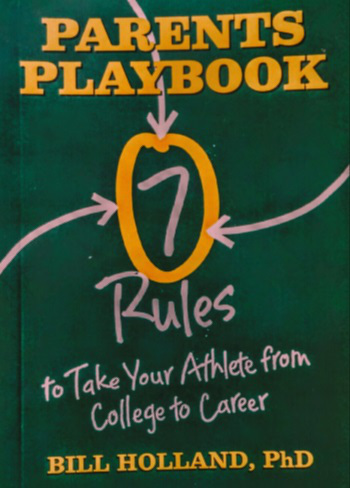
Click for more information
Parents Playbook: 7 Rules to Take Your Athlete from College to Career is a concise pocket guide about what, why and, most important of all, how parents can provide excellent counseling to get invaluable life lessons from athletic competition.
In reality, the information can be used by parents of all athletes, from early-aged beginners onward even if they play only for a short time. It is a book about the rules of life and career; and about preparation for the professional job market at graduation using what is learned from athletic competition.
Practical and specific, this handy playbook helps student and parent avert disaster by treating college as a four-year-discovery-and-preparation period for career after graduation. The seven rules in this book are supported by the resources of Bill Holland’s enterprise and that of his consulting practice, College to Career Catalyst, offering career advisory services, online courses, books and other help aids so that the parents of students can participate with their kids in successful preparation for life after college.
ABOUT BILL: As an award winning college professor, business executive, entrepreneur and author, Dr. Bill Holland knows all sides of the career management process. Parents Playbook is your opportunity to take advantage of what he knows. This “mini-book” is jammed full of useful information for parents as they counsel their kids from college to career.
Those are some of the reasons why Bill has been asked by Michigan State University, Albion College, the NAACP and NBA scouts to share what he knows with the many parents they encounter.
FIND BILL ONLINE: Website http://collegetocareercatalyst.com/
LinkedIn https://www.linkedin.com/in/billhollandtherightjobguy







January 28, 2016
Power Steering!
Power Steering is a series of vignette-style articles illuminating the power of intuitive feelings and insight. In her book, Marilyn makes the reader wonder how our lives would be different if we truly trusted a higher power to guide us. What would it be like to tune into a force that works for our benefit and well-being in a universe so complex that we feel our significance does not even register? Throughout the book, the author uses a car analogy to show what happens when we let higher power drive us on life’s journey: We stay behind the wheel, she shows, but we let “power steering” make our passage much less tiresome. The power steering fluid is intuition, a beautiful and subtle messaging from God. Our learning to recognize it and trust it allows us to make the choices in life that lead us to our most blessed destinations. Through a collection of poetic-narrative meditations and anecdotes in Power Steering, M. J. Scott rolls out the panorama of her own life’s enrichment when she lets intuition take the wheel.

Author M. J. Scott (USA)
Marilyn studied education at Manchester College, earning her BS in Education, followed by her MA in Mass Communications at Norfolk State University. She completed all but her dissertation in the doctoral program of Education Administration at California Coast University. Her two previously published books are Journey Into Fulfillment and Time on the Turn.
Power Steering is currently available for pre-order in e-book form through Amazon, Barnes and Noble, Smashwords and all online book retailers including Apple iBooks. The Smashwords link (https://www.smashwords.com/books/view/610304) offers all available file formats for any reading device including Kindle, Nook, Apple and PC. The Amazon link for Kindle readers is http://www.amazon.com/gp/product/B01B52W3CO. Print editions will be available before March 1, 2016 through Amazon, Barnes and Noble and CreateSpace.








January 15, 2016
David Bowie’s Top 100 Books

Waking up on Monday to find this music icon has passed away may have come as a shock to many, but behind the musician and actor was a literary man. To bring recognition to his love of the written word, I thought it would be a great tribute to show what a prolific reader this man was.
On October 1st 2013, openculture.com posted this article written by Josh Jones:
“David Bowie Is,” the extensive retrospective exhibit of the artist and his fabulous costumes, hit Toronto last Friday …, and as many people have reported, in addition to those costumes—and photos, instruments, set designs, lyric sheets, etc.—the show includes a list of Bowie’s favorite books. Described as a “voracious reader” by curator Geoffrey Marsh, Bowie’s top 100 book list spans decades, from Richard Wright’s raw 1945 memoir Black Boy to Susan Jacoby’s 2008 analysis of U.S. anti-intellectualism in The Age of…
View original post 712 more words







January 5, 2016
Books to Crack Open Your View of the World!
Books to Crack Open Your View of the World!
Like the title? It is the title of a Listopia list that I created on Goodreads in July, 2013. I started the list with ten books that I had read which had shifted my world view. These are books written passionately by authors who want to take the readers to times, places, and ways of life far from the ordinary; to challenge their views of the world; to crack open their hearts.
I invited readers on the Goodreads site to add books that had affected their lives to the list. I wrote it this way: “I only chose ten books to start this list. Let anyone who has had their view of the world or their outlook on life changed by books list them here. List from the heart!”
Let’s Change the World!
I was an unknown on the Goodreads site in those days, so the list grew slowly. The following month, I added two books to my list. Siddhartha by Hermann Hesse was at the top of my list of twelve books. I wrote on the site, “I added a couple more books to the list, hoping to renew some interest in the list. Please add and vote. What books do you believe will change a person’s view of the world? Let’s make a list that will change the world!”
In addition to adding books to the list, readers can vote for the books , and the listing ranks the books from highest to lowest votes.
Time went by and a few people contributed. I became busy with writing and publishing and confess that I did not often visit the Goodreads site. I even forgot about the list after about a year.
So you can imagine my surprise today when I received an email notice that someone on Goodreads had posted a “Like” to my list of books. That renewed my curiosity, and I clicked to see what had happened to the list.
You can also imagine my shock to find that the listing is alive and thriving! There are now 91 books on the list and there have been 62 contributors. Also very satisfying is the fact that Siddhartha holds down the number two spot!
If you want to know the number one book, you will have to check the list. Ha! It is a great list of amazing books, and Goodreads informs me that I have read 22 of them. What I hope in sending you this is that you will look at the list, maybe be inspired to read some of the books, and even better, add some books that cracked open your world and your heart!
Here is the link to “Books to Crack Open Your View of the World.” (Just click those words.)
By the way, since 2013 I have read some more books that I could add to the list and include favorite authors like Nancy Stancill and Andrea Barbosa. In the picture at top is a small book of poetry which I reviewed on Goodreads, Kristos Callis’ A Knock on a Door.










